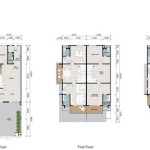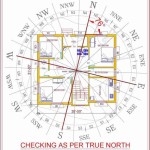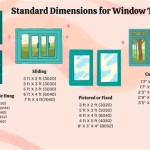Cardinal Home Plans: Navigating the Design and Selection Process
Building a new home is a significant undertaking. A crucial step in this process is selecting the right house plan. Cardinal home plans, known for their diverse styles and thoughtful layouts, offer a wide range of options for prospective homeowners. Understanding the nuances of these plans, from architectural styles to key features, is essential for making an informed decision.
Key Considerations When Choosing Cardinal Home Plans
Several factors contribute to the selection of an ideal home plan. Careful consideration of these elements ensures the chosen design aligns with individual needs and preferences.
- Lifestyle requirements
- Budget constraints
- Lot size and orientation
- Desired architectural style
- Number of bedrooms and bathrooms
- Provision for future expansion
- Energy efficiency features
Exploring Different Architectural Styles in Cardinal Home Plans
Cardinal home plans encompass a variety of architectural styles, catering to diverse aesthetic preferences. Each style boasts unique characteristics, influencing both the exterior façade and the interior layout.
- Craftsman: Characterized by low-pitched roofs, wide porches, and exposed rafters, Craftsman homes emphasize natural materials and handcrafted details.
- Modern Farmhouse: Blending rustic charm with contemporary elements, modern farmhouses often feature board-and-batten siding, metal roofs, and open floor plans.
- Traditional: Traditional homes typically showcase symmetrical façades, classic detailing, and formal living spaces, evoking a sense of timeless elegance.
- Contemporary: Clean lines, geometric shapes, and large windows define contemporary homes, emphasizing functionality and minimalist design.
- Mediterranean: Inspired by the architecture of coastal regions, Mediterranean homes feature stucco exteriors, red tile roofs, and arched doorways.
Understanding the Components of a Cardinal Home Plan
A comprehensive home plan provides detailed information about the structure and layout of the house. Understanding these components is essential for visualizing the finished product.
- Floor plans: Depict the arrangement of rooms and their dimensions on each level of the house.
- Elevations: Show the exterior views of the house from different angles.
- Foundation plans: Detail the foundation layout and construction specifications.
- Roof plans: Illustrate the roof design, including slope, materials, and overhangs.
Customizing Cardinal Home Plans
While pre-designed plans offer a starting point, customization options allow homeowners to tailor the design to their specific needs. Modifications can range from minor adjustments to significant alterations.
- Adjusting room sizes
- Adding or removing rooms
- Modifying window and door placements
- Altering exterior finishes
- Incorporating specific features like fireplaces or outdoor kitchens
Working with Builders and Architects
Collaboration with experienced professionals is crucial throughout the building process. Builders and architects provide valuable expertise and ensure the successful execution of the chosen home plan.
- Obtaining necessary permits
- Managing construction timelines
- Addressing site-specific challenges
- Ensuring compliance with building codes
- Overseeing quality control
Evaluating Lot Suitability for Cardinal Home Plans
The characteristics of the building lot play a significant role in determining the suitability of a particular home plan. Careful assessment ensures the chosen design complements the site and maximizes its potential.
- Lot size and shape
- Topography and drainage
- Orientation to sunlight and prevailing winds
- Presence of trees and other vegetation
- Local zoning regulations
Budgeting for a Cardinal Home Plan
Developing a realistic budget is essential for a successful building project. Understanding the various costs involved helps homeowners make informed decisions and avoid financial surprises.
- Cost of the home plan
- Construction materials and labor
- Permitting fees
- Site preparation expenses
- Landscaping costs
- Contingency funds for unforeseen expenses
Considering Energy Efficiency in Cardinal Home Plans
Incorporating energy-efficient features into the design not only reduces environmental impact but also lowers long-term operating costs. Sustainable design choices benefit both the homeowner and the planet.
- High-performance insulation
- Energy-efficient windows and doors
- Properly sealed building envelope
- Efficient heating and cooling systems
- Renewable energy sources like solar panels
Selecting the right Cardinal home plan requires careful consideration of numerous factors, from architectural style and functionality to budget and lot suitability. Thorough research and collaboration with experienced professionals ensure the chosen design aligns with individual needs and preferences, resulting in a dream home that stands the test of time.

Cardinal Nesting Shelter Birdhouse Plans Construct101

Cardinal Nesting Shelter Birdhouse Plans Construct101

Cardinal Nesting Shelter Bird House Plans Construct101 Houses Ideas Diy Free

Cardinal Sketchpad House Plans

Cardinal Sketchpad House Plans

Cardinal Nesting Shelter Birdhouse Plans Construct101
Cardinal Reimagined

Home Plan Cardinal Point Sater Design Collection
Platinum Cottages 575e The Cardinal With Alternate Kitchen

Diy Cardinal Bird House Construct101








